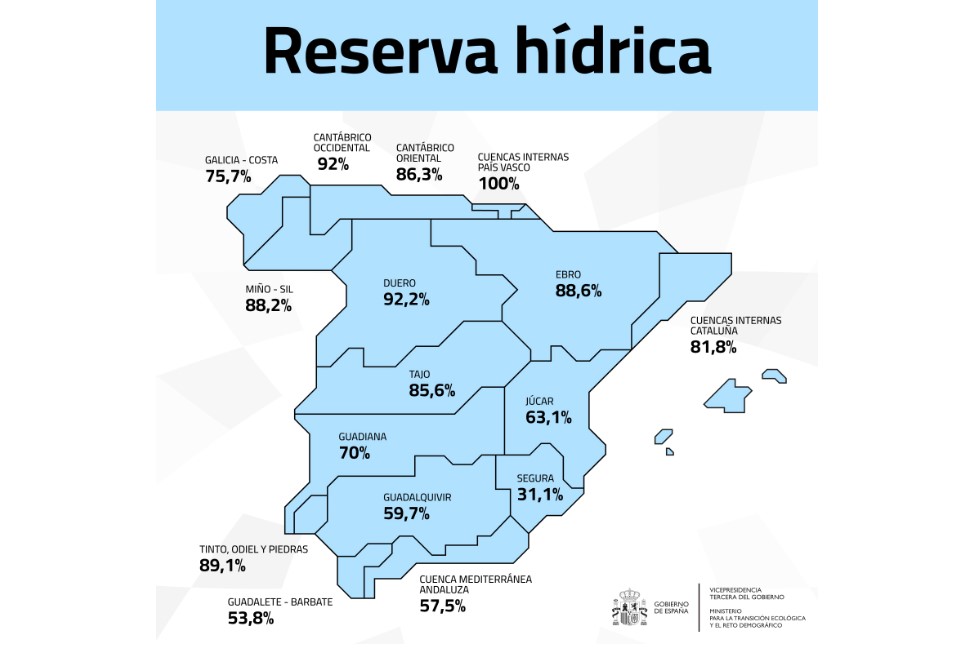Spain has seen its water reserves decline for the first time after almost four consecutive months of increases. The country’s reservoirs are currently at 76.8% of their capacity, a 0.7 percentage point drop compared to the previous week. This breaks the positive trend of recent months, which was favored by continuous rainfall.
Current Status of Spain’s Water Reserves
Currently, Spain’s reservoirs store a total of 43,038 cubic hectometers (hm³) of water. Over the past week, this volume decreased by 374 cubic hectometers. Despite this slight decline, the current water reserve is remarkably high compared to previous years. It is 15.8% higher than the same period in 2024 (37,134 hm³) and even 22.03% above the average of the last ten years.
A look at the individual basins reveals a predominantly positive picture: all basins in Spain exceed 50% capacity, with one exception – the Segura basin, which stands at 31.1% and continues to be a concern.
Regional Distribution: Where Spain’s Reservoirs are Overflowing
Nine of the Spanish basins exceed 80% capacity, and three of them even reach over 90% of their volume. Among the leaders, storing 90% or more of their capacity, are the internal basins of the Basque Country, which proudly reach 100%. Closely followed by the Duero basin at 92.2% and the western Cantabrian Sea at 92%.
Basins with over 80% capacity include:
- Tinto, Odiel, and Piedras: 89.1%
- Ebro: 88.6%
- Miño-Sil: 88.2%
- Eastern Cantabrian: 86.3%
- Tagus (Tejo): 85.6%
- Internal Basins of Catalonia: 81.8%
More than half of the reserves are found in:
- Coastal Galicia: 75.7%
- Guadiana: 70%
- Júcar: 63.1%
- Guadalquivir: 59.7%
- Andalusian Mediterranean: 57.5%
- Guadalete-Barbate: 53.8%
As mentioned, the Segura basin remains at the bottom with 31.1%.
Rainfall and Its Impact
According to the Ministry for Ecological Transition, recent rainfall has primarily affected the Mediterranean slope, while being less frequent on the Atlantic slope. The highest precipitation was recorded in Vitoria-Gasteiz with 27.3 liters per square meter (l/m²). Considering the slopes, the Atlantic slope has a filling level of 77.2% and the Mediterranean slope at 75.4%. This distribution of rainfall explains the varying water levels in the basins and underscores the importance of sustainable water management in Spain.




